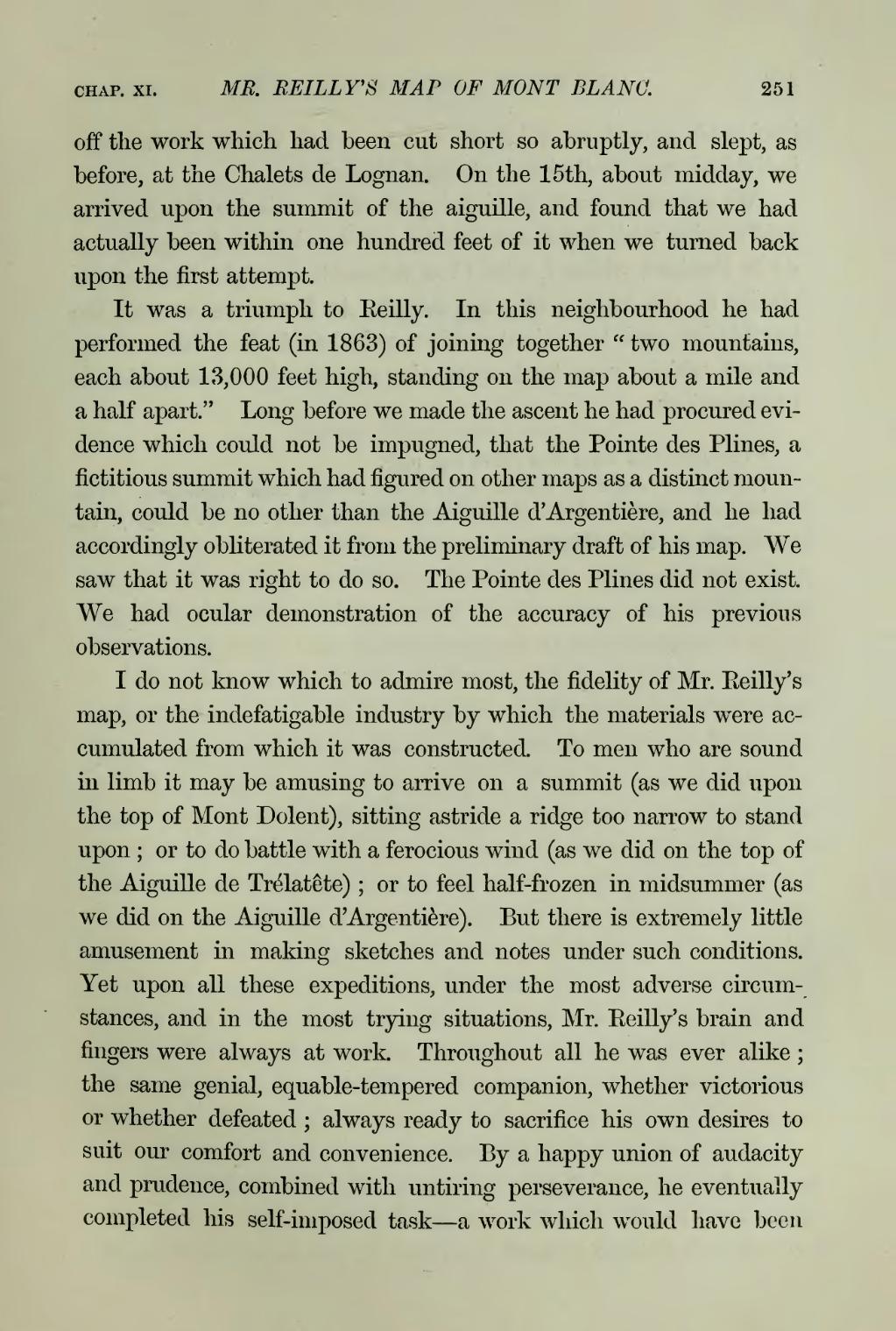off the work which had been cut short so abruptly, and slept, as before, at the Chalets de Lognan. On the 15th, about midday, we arrived upon the summit of the aiguille, and found that we had actually been within one hundred feet of it when we turned back upon the first attempt.
It was a triumph to Reilly. In this neighbourhood he had performed the feat (in 1863) of joining together "two mountains, each about 13,000 feet high, standing on the map about a mile and a half apart." Long before we made the ascent he had procured evidence which could not be impugned, that the Pointe des Plines, a fictitious summit which had figured on other maps as a distinct mountain, could be no other than the Aiguille d'Argentiere, and he had accordingly obliterated it from the preliminary draft of his map. We saw that it was right to do so. The Pointe des Plines did not exist. We had ocular demonstration of the accuracy of his previous observations.
I do not know which to admire most, the fidelity of Mr. Reilly's map, or the indefatigable industry by which the materials were accumulated from which it was constructed. To men who are sound in limb it may be amusing to arrive on a summit (as we did upon the top of Mont Dolent), sitting astride a ridge too narrow to stand upon; or to do battle with a ferocious wind (as we did on the top of the Aiguille de Trélatête); or to feel half-frozen in midsummer (as we did on the Aiguille d'Argentière). But there is extremely little amusement in making sketches and notes under such conditions. Yet upon all these expeditions, under the most adverse circumstances, and in the most trying situations, Mr. Reilly's brain and fingers were always at work. Throughout all he was ever alike; the same genial, equable-tempered companion, whether victorious or whether defeated; always ready to sacrifice his own desires to suit our comfort and convenience. By a happy union of audacity and prudence, combined with untiring perseverance, he eventually completed his self-imposed task—a work which would have been

